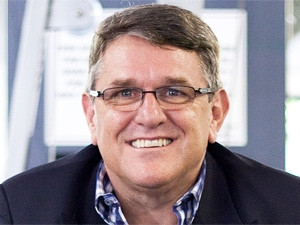
CIOs are expected to have excellent operational performance and still add 'value' to the business. What this means is that CIOs need to be both in control of and let go of processes. Let's take cloud computing as an example: it can be the CIO's worst nightmare or biggest value-creator for business. Allowing business the freedom to do what it wants is critical. However, it's vital that governance and the architecture are adhered to.
If CIOs continue to be controlling, they will be isolated and bypassed, which is why they have to be creative to succeed.
Creativity is a mindset, an intentional way of thinking and doing things. Creativity can be balanced with the logic or analytical thinking that many CIOs and IT teams possess. This is what's called whole-brained thinking: where the balance of logic and creativity work together symbiotically.
CIOs need to ask probing questions and experiment with new possibilities. They need to create and consistently drive innovation by allowing their teams to be more creative. This doesn't mean forcing IT teams that are more analytical to give up this skill; it means fostering an environment of whole-brained thinking.
Challenge assumptions
Avoid getting stuck in old thinking and assumptions: being creative means stimulating and challenging thinking and having open discussions about difficult issues.
* Challenge assumptions about what will or will not work.
* Ask, 'why not?'
* Ask, 'what have you tried to do differently?'
* Ask, 'what if?'
There need to be certain boundaries, but they mustn't be constraining. At the outset, it's important to decide what needs to be controlled and what will be a lot more 'fuzzy'. Loose guidelines should be set for the business regarding what and how it can decide on its own technologies.
A key part of innovation initiatives is to set tough deadlines and not accept excuses: 'tell me how to do it, not how NOT to do it'.
Who informs our decisions?
Sorry architects, but the CIO cannot allow you to dictate what happens. However, the CIO should:
* Encourage regular think tanks
* Harness young, creative people
* Involve customers
* Think Tanks
Look to introduce fresh thinking and fresh eyes on a subject. CIOs are so consumed by day-to-day issues that they don't see the wood for the trees. That's where an external perspective can help. Look for out-the-box thinkers, within or outside the organisation. As Lee Iacocca said when regenerating GM: "The kind of people I look for to fill top management spots are the eager beavers, the mavericks. These are the guys who try to do more than they are expected to do...they always reach."
* Harness young, creative people
Learn from the younger generation, which thinks very differently than traditional business or IT people. But don't do this exclusively ? experience also counts enormously in this era of rapid change.
* Involve customers
CIOs need to put more control in the hands of customers. The goal is to align decisions consistently with those of the users, to create the perfect experience. They are the real reason CIOs exist ? to make their lives easier, more convenient, and the services and products more relevant in their lives.
* Embrace new technology
Don't be scared of new technology; embrace it. CIOs need to keep up with what is happening, and must be able to separate the fads from the game changers.
* Lead the social revolution
Times have changed. IT's reign over social engagement is over. Embrace social media tools and work with other executives to find out how best to use these tools to your advantage. Are you tweeting yet, Mr CIO? Are you using social media to find out what others think? Are you using LinkedIn for recruitment and partnering? Have you considered using enterprise-wide chat rooms? Work with marketing to empower employees and help them leverage these channels while ensuring compliance and security.
* Embrace failure
Accept that some mistakes will be made. A good rule of measure here is to 'fail fast, fail early'. The IT world is littered with examples of 'watching a position' and hoping it will right itself. Be decisive, consult often, widely, and then act.
* Take risks
There's a big difference between taking risks and taking calculated risks. Risk-takers leave too much to chance, whereas CIOs who take calculated risks find ways to minimise the risks to the business. You can do this by testing your initiative on a pilot group of clients, or by analysing the possible downside, ensuring that the upside outweighs the downside.
First published in the April 2014 issue of ITWeb Brainstorm magazine.
Share